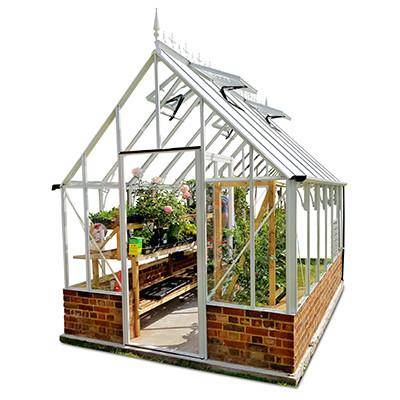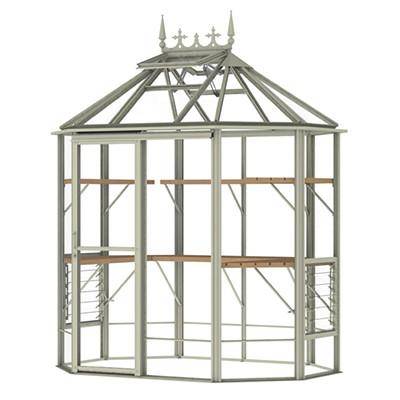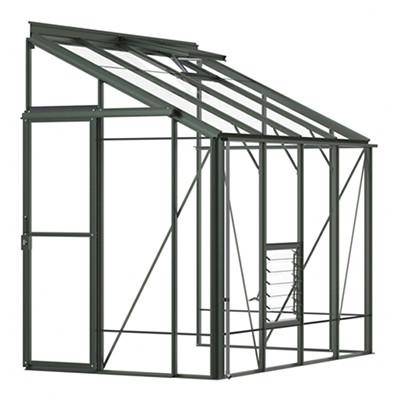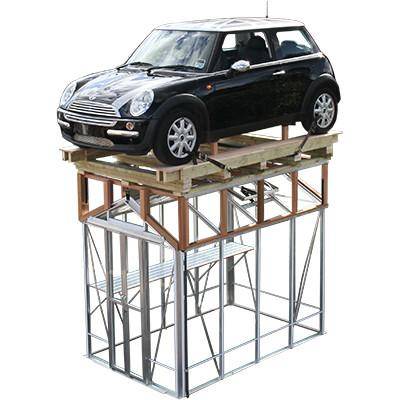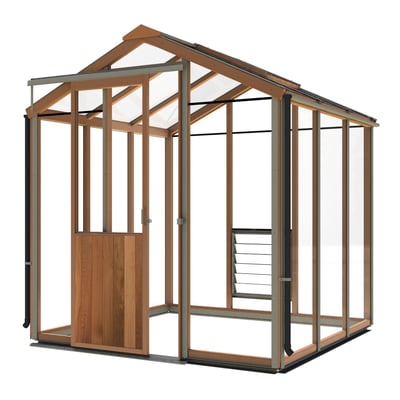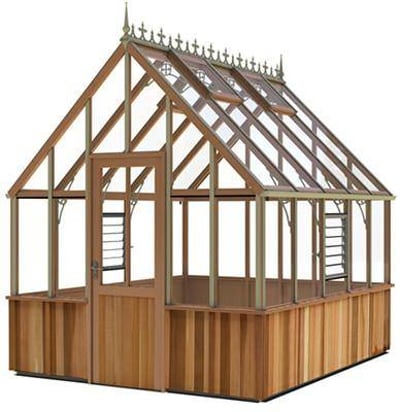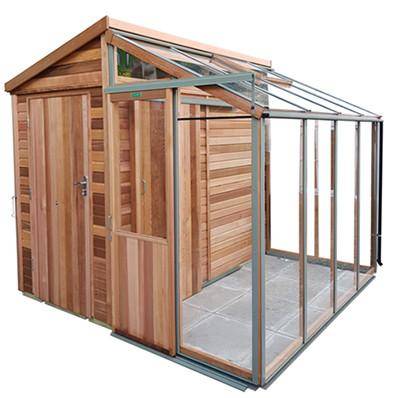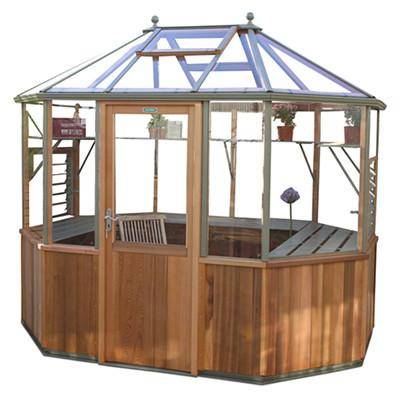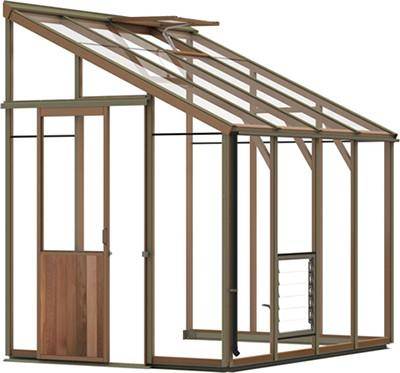3. Buyers Guide - Other important considerations
Glass
Now that you’ve chosen your ideal greenhouse; the size is a perfect fit for your garden, and it’s easy on your pocket.
Traditionally, most greenhouses were supplied with horticultural glass, as standard, and is the lowest grade of glass available. The only real benefit it offers is that it’s the cheapest method of glazing. The main drawback of horticultural glass is that is fragile. When it smashes, it breaks into sharp, dagger-like shards; a serious danger to anyone working below.
This is why we only offer full-sheet, toughened safety glass. 3mm TSG on Simplicity, Hercules and Alton ranges, with 4mm TSG on our Robinson's ranges.
Without going too deeply into the science behind the production of toughened safety glass, it is basically ordinary glass which has been heated to 600°, before its surfaces are very quickly cooled. This causes a counteractive effect between the centre and the surface of the glass, and it’s this which gives it 7x the strength of horticultural glass, leading to fewer breakages. It’s also this process which forces the glass, when broken, to shatter into tiny less harmful pellets, instead of potentially lethal shards.
As a rough guide, it will take the impact of a football, but not a cricket ball. But do be careful when handling it, as the edges are its achilles heel. Never allow them to touch a rough, hard surface such as concrete.
Whilst toughened glass is more expensive than ordinary glass, we’ve been able to dramatically reduce the cost over the past few years, by buying directly from the manufacturer. By cutting out the middle man and purchasing in bulk, we are able to pass on the dramatic savings to you, so it’s more affordable than ever, and actually accounts for at least 90% of all the greenhouse glass we supply.
Another benefit of toughened glass, is that its strength allows it to be manufactured and supplied mostly in full length panes, and with no unsighly overlaps, it makes your greenhouse look smarter and is easier to clean.
Running straight, from ground to eaves, and eaves to ridge, these full panes provide excellent visibility and allow the maximum amount of light into your greenhouse. Where joins are necessary, such as on the gable ends, an H shaped joining strip prevents the need for an overlap, although some larger models do require an overlap in the roof.
On some greenhouses, twin wall polycarbonate is a glazing option that is available instead of glass. It does have certain advantages over glass, such as slightly better insulation properties, and it doesn't break like glass so it's considered safer. It also diffuses the sunlight preventing plants being scorched, and it’s also resistant to UV rays.
The disadvantages, however, make polycarb a far less attractive option – quite literally. To start with, it is not clear, but opaque; so you are not able to see through it properly. You’ve gone to all the trouble of nurturing those prize-winning Geraniums and you can’t see them from outside the greenhouse!
Over time, the fluted chambers between the twin walls can fill with dirt, algae and insects, not only spoiling the look of the greenhouse, but also decreasing the already limited light transmission.
The major problem with polcarbonate, is that unlike glass, it is very light, making the frame of the greenhouse less rigid. Polycarb panels have a tendency to flex in high winds, causing them to ‘pop out’ of the frame, and once the wind gets into the greenhouse, disaster looms!
As if all this wasn’t enough, it is prone to surface scratches and is more difficult to clean than glass, as it is highly sensitive to abrasive cleaners and alkaline cleaning products. In fact, most all-purpose household cleaners contain at least one potentially damaging ingredient.
When you evaluate the benefits and drawbacks of these three alternative glazing materials, it's clear why our advice to you is to go for toughened glass!
Glass retention
So you’ve chosen your glazing, now you need to decide how you want to hold it in place. And there are 3 basic choices: galvanised or stainless steel ‘W’ wire clips, sprung stainless steel band clips or full length bar capping.
Again the choice is largely based on budget, but you should also consider weather conditions in your area. Glazing clips would usually suffice, but if you live in an area prone to high winds, you might want to consider upgrading to full length bar capping; the style of which would depend on your brand of greenhouse.
Whilst the ‘W’ clips are adequate for the job, they can be fiddly to fit, whereas the sprung band clips snap easily into place, are stronger, neater, and even of a similar price. Our Simplicity range comes with these band clips as standard.
Bar capping comes in two different versions; that which snaps into the glazing bar (the same as the steel band method,) or, in the premium greenhouses, a system which screws directly into the frame. Both styles run the full length of the glazing bars, providing the ultimate in glass retention.
Simplicity and Hercules greenhouses use a snap in PVC style, which is an optional extra for a Simplicity, but come as standard with a Hercules. Robinsons and Alton greenhouses, however, employ the screwed in system and are included as standard (although the standard timber method can be upgraded to Moss Green, powder coated aluminium with Alton). Robinsons also include a capping cover, to hide the screws.
As well as providing extra strength and a near watertight seal for your glazing, bar capping is a far neater alternative to clips, and because it is easy to clean, will improve the overall look of your greenhouse. Please note that it can only be used with large pane glass, which is yet another reason why we recommend toughened safety glass as the preferred glazing method.
Ventilation
This is very important, if you wish to create a good growing environment in your greenhouse. Unfortunately, few greenhouses are supplied with enough ventilation as standard, and you may need to add more.
Not only does ventilation keep the temperature down, avoiding plant damage through overheating, it also keeps the air in the greenhouse moving, by providing continuous circulation, during those hot, summer days. This is best achieved by adding louvre side vents.
Side and roof vents work in conjunction with each other, as cool fresh air is drawn in through the side vents, pushing the warm stale air out through the roof, producing what is commonly known as “the chimney effect.” As air is effectively being drawn in through the louvre, this means that they are still effective, even if close to a hedge or fence.
As everyday life can be so hectic, time doesn’t always allow you to keep a close eye on the temperature inside your greenhouse, so you might want to consider adding auto-openers. These are bolt on devices, that automatically open each of your roof and side louvre vents as the greenhouse warms up and closes them again as it cools down.
A cylinder filled with a wax-like substance powers the auto-vent, so no electricity is required. When warmed up, this substance expands a piston to open the window, and vice versa to close it. You can, of course, adjust their operation to suit your specific growing needs.
Once considered a luxury, auto-vents have become an essential device for every greenhouse. Even if you are home all day, use of auto-vents will give a much more balanced and even approach to providing necessary ventilation.


